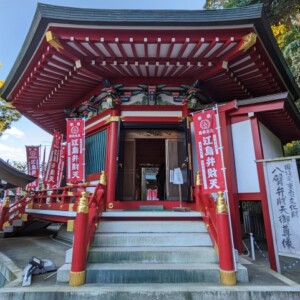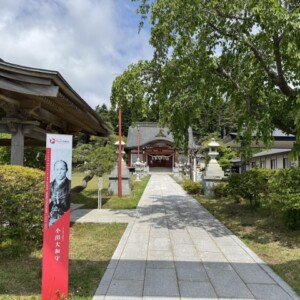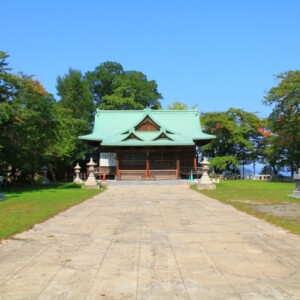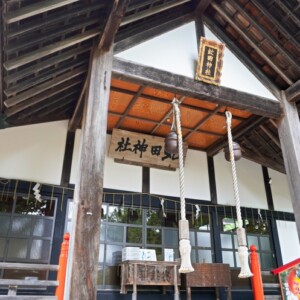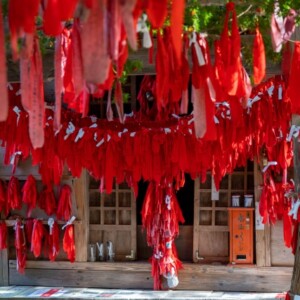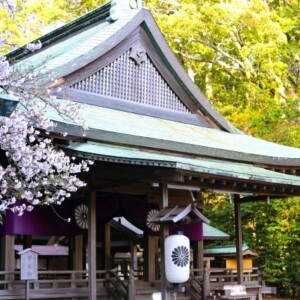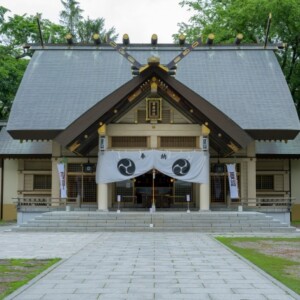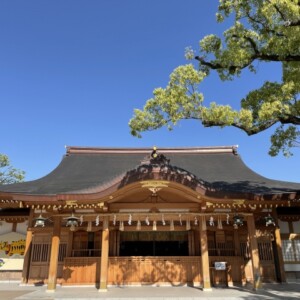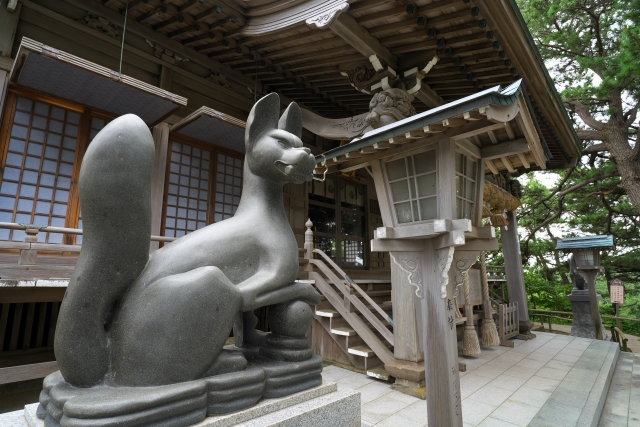
Takayama Inari Shrine|Complete guide to the history, highlights, and worship information of the shrine with a thousand sacred torii gates
Takayama Inari Shrine, located quietly on Mt. Byobu in Tsugaru City, Aomori Prefecture, is a shrine that attracts nationwide attention for its meandering Senbon-torii (one thousand torii) gateways, which look like dragons. The shrine is well known as Aomori Prefecture’s number one shrine of spiritual power as the god of a good harvest, safety at sea, and prosperous business, and is a hot tourist spot visited by foreign tourists. The shrine is different from Fushimi Inari-taisha in Kyoto, and we will take you to the fantastic world of Senbon-torii, surrounded by the great nature of Tsugaru.
Outline and basic information about Takayama Inari Shrine
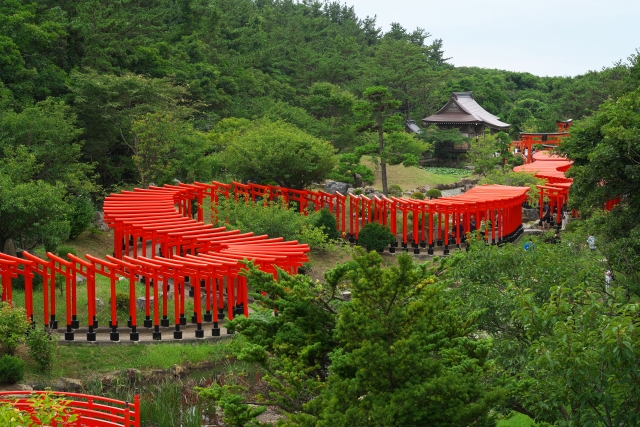
Takayama Inari Shrine is located on a hill about 22 meters above sea level in Ushigata-cho, Tsugaru City, Aomori Prefecture. The shrine is characterized by its grand scale, which is different from ordinary shrines, as it has a vast site where the entire mountain serves as the shrine precincts. Behind the shrine lies Shichirinagahama facing the Sea of Japan, and the location is blessed with a rich natural environment.
What has made this shrine nationally famous is the Senbon-torii, a series of countless vermilion torii gates that create a mysterious, otherworldly space. The meandering, serpentine line of torii gates, which look like dragons when viewed from high above, boasts a unique beauty that sets it apart from other Senbon-torii.
History and Origin
The date of the Takayama Inari Shrine is not known, but it is said to have been founded by the Ando clan, a powerful family that ruled the area from Kamakura to Muromachi periods. The Ando clan was a powerful family that dominated the Tsugaru region, trading extensively on the Sea of Japan from their stronghold in Jusan Minato.
Interestingly, there is a shrine legend concerning the founding of the Inari Shrine. It is said that in 1701, when the Ako feudal lord Naganori Asano was killed and wounded in Edo Castle, Terasaka Sangoro, a retainer of the Ako feudal clan, took over the Inari Great God enshrined in the Ako Castle and enshrined it at a sacred place in Takayama.
According to the legend of the founding of San’o Shrine, which is a shrine within the precincts of the Company, there was a great sacred site with thirteen sect temples built around Sann’o-bo Hiyoshi Shrine. However, it was burnt down by the Nanbu forces in 1443 (Kakichi 3). Takayama Inari Shrine has long been revered as a sacred place with great spiritual power.
Deities and Benefits
The deities of Takayama Inari Shrine are Ukanomitama-no-Mikoto, Sadahiko-no-Mikoto, and Omiyano-No-Mikoto. These deities are popularly known as Inari no Mikami, and have long been worshipped as gods responsible for the development of agriculture and commerce.
They are especially known as gods of good harvest, safety at sea, and prosperous business, and are worshipped in a variety of ways, including agriculture, commerce, industry, fishery, domestic safety, healing of illness, protection on the road, and the removal of possessions. Because of its wide range of benefits, the shrine is visited by many worshippers from Tsugaru City and other distant places, and is well known as the most sacred shrine in Aomori Prefecture.
The shrine is also home to the Ryujinmiya (Dragon God Shrine), which plays an important role in protecting the shrine from fire, as the Dragon God is worshipped as an incarnation of the Water God and is believed to call the clouds and bring rain.
Highlights and Features of Takayama Inari Shrine
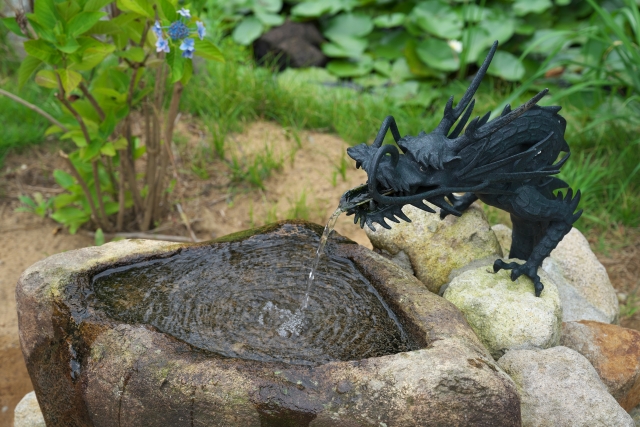
The charm of Takayama Inari Shrine lies in its grand scale and unique scenic beauty. After driving through the huge torii gate (called “Otorii”) and entering the shrine grounds, visitors will pass by a hall for worship and a place for awarding sacred fuda (votive cards). 96 steep steps lead up to the hall of worship, and from there the path continues to the Senbon-torii (gateway to the shrine).
Mysterious view of Senbon-torii
The most impressive feature of Takayama Inari Shrine is the Senbon-torii, or “thousand torii” gates. The number of torii gates, each about 2 meters high, is a secret, and counting them yourself is one of the most enjoyable parts of the tour.
Looking at the Senbon-torii from the observation deck at the top, it looks like a meandering red dragon. This meandering sight of Senbon-torii looking like a dragon is rare in Japan and is a unique feature of Takayama Inari Shrine. The vermilion torii gates are attractive in all four seasons, with cherry blossoms in spring, fresh greenery in summer, and pure white snow in winter, and are popular for their photogenic appearance.
The winter scenery is especially special, with the vermilion of the Senbon-torii gate reflected in the pure white snow, as if time has stood still and the view is like an ink painting. This fantastic scenery, which cannot be seen at other Senbon-torii shrines in other prefectures, is one of the major attractions of Takayama Inari Shrine.
Attractions of Ryujingu Shrine and Shinen Garden
Beyond the Senbon-torii, there is Ryujinmiya, a shrine built on the banks of Ryujin Pond and connected to the Senbon-torii by a drum bridge. The area around the Ryujingu Shrine has been developed as a Shinto garden, with a mysterious sight of vermilion-lacquered torii gates lined up in layers on a gently sloping hillside.
In addition to Takayama Inari Shrine, there are several other shrines and temples enshrining dragon gods and dragon kings in the Tsugaru region, called the Tsugaru Ryujin Sacred Sites. Touring around the sacred places where the gods reside is a unique way to enjoy this region.
Countless Inari-sama (stone statues of foxes)
There are countless statues of foxes near the observatory. The statues of foxes that have served their purpose at Inari shrines all over Japan have been prayed to and have been standing quietly at Takayama Inari Shrine, and gradually began to gather at Takayama Inari Shrine around the Meiji period (1868-1912).
Most of them are placed in pairs, creating a strange sight as if this is the only place cut off from the rest of the world. The fox statues are interesting to look at one by one, as each has its own unique expression and appearance, and some of them look like dogs, while others look like cats.
Visitor Guide
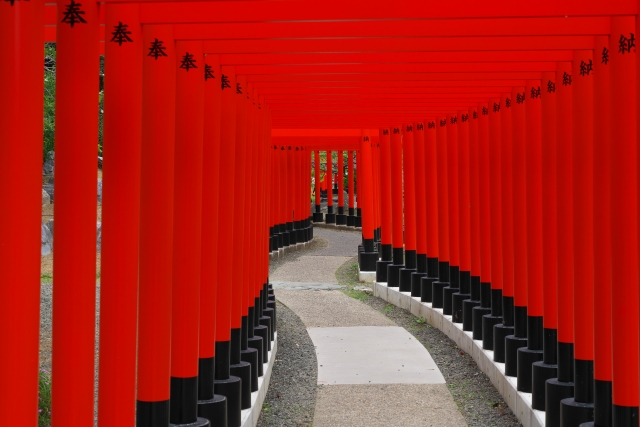
Worship at Takayama Inari Shrine is recommended with comfortable walking shoes due to the vast grounds and many steps. There are 11 shrines on the grounds, each enshrining a unique deity, so it is best to take your time and visit them at your leisure.
Worship Etiquette and Manners
Worship at Takayama Inari Shrine is conducted in the same manner as at ordinary shrines. Visitors should bow when passing through the Otorii (Grand Gate) and avoid the center of the path. 96 steep steps lead up to the hall of worship, but if you are not confident about your legs and back, there is also a gentle route on the Women’s Slope, although it is a little more detouring.
At the hall of worship, you will pray in the manner of “Ni-ni-happo-te-Ippai” (two claps, one hand for worship), and then proceed to the Senbon-torii (gateway to the main shrine). The torii gate is about 2 meters high, so tall visitors should be careful to keep their heads above the gate. Also, please be careful of water safety when visiting the shrine around the Ryujin Pond.
The hours of worship are from 9:00 to 17:00, and the temple is open all year round. However, during the winter season, please be careful with your footing due to the deep snow.
Annual and Seasonal Events
Takayama Inari Shrine holds a variety of festivals throughout the four seasons, but the most important of these is the annual festival held on September 25.
In a solemn atmosphere, priests line up and walk up the Onnazaka slope to the hall of worship, the site of the annual festival. Once inside the hall of worship, they perform a ceremony called “Shinei Sho Sanko,” in which an offering is made to the gods, followed by a dedication of Tsugaru Kagura (Shinto music and dance).
As for seasonal highlights, when spring arrives, the mountain cherry trees and double-flowered cherry trees around the Senbon-torii (gateway to the shrine) come into bloom, creating a gorgeous atmosphere that differs from the snowy landscape. In summer, the contrast between the fresh greenery and the vermilion torii gate is beautiful, and at the end of July, a wheel of thatched grass is set up at the torii gate on the approach to the shrine to purify the body and soul and to pray for good health and good fortune.
Red Seal and Good Luck Charm Information
Takayama Inari Shrine offers a wide variety of gifts, such as a fox fortune (500 yen) and an ema (1,200 yen) modeled after the Otorii (Grand Gate).
The red seals are also popular, with a total of nine different designs (from 300 yen), including the Senbon-torii gate and the Ryu-jingu shrine, and some designs are seasonal, so visitors can receive a different red seal depending on the time of year. Red seals and awards are available at the shrine office next to the parking lot; please ask a priest for details.
Access/Use Information
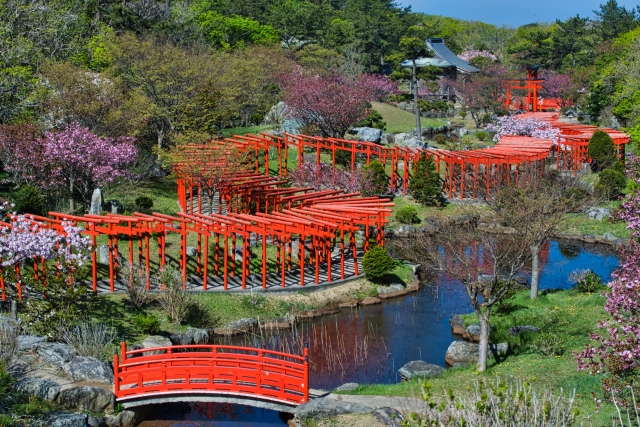
Takayama Inari Shrine is located in the Byobuyama area of Tsugaru City, Aomori Prefecture, and is conveniently accessible by private car or rental car due to the time required to reach the shrine by public transportation.
Access by Public Transportation
Access by car
It takes about 26 minutes from the Goshogawara Kita IC on the Tsugaru Expressway and about 30 minutes by car from Goshogawara Station on the JR Gono Line. From Aomori City, it takes about 1 hour by car.
Access by public transportation
From Goshogawara Station, take the Kounan Bus Kodomari Line (via Juso) (about 40 minutes), get off at Takayama Shrine Entrance, and take a 5-minute cab ride. From the Tokyo metropolitan area, take the Tohoku Shinkansen bullet train from Tokyo Station to Shin-Aomori Station (approx. 3 hours), then the JR Ou Main Line to Kawabe Station (approx. 30 minutes), and the JR Gono Line to Goshogawara Station (approx. 25 minutes)</parameter>, which takes about 5 hours.
Since you will need to take a cab from the bus stop, we recommend that you contact a cab company in advance.
Hours of worship, fees, and parking information
Hours and Fees
- Hours: 9:00-17:00 (8:00-17:00 for some information)
- Closed: Open all year round
- Admission: Free
Parking information
There is free parking for 60 cars (50 cars during peak season with a temporary parking lot open). Please allow plenty of time for parking, as it can be crowded on holidays and during the tourist season.
Other Facilities
There is a sanjuroden (a hall of worship) on the temple grounds, and lodging facilities are also available for visitors to stay overnight with meals in the sanjosho. There is also a rest area where visitors can enjoy light meals such as soba and udon noodles and Japanese sweets, and purchase souvenirs such as Kozan monaka (250 yen), a type of monaka with red bean paste sandwiched between two pieces of skin, which you can eat yourself.
For more detailed information, please check the official website or contact the shrine directly in advance.
<Address> 147-1 Washinosawa, Ushigata-cho, Tsugaru-shi, Aomori 038-3305
Reference site
Takayama Inari Shrine Official Website: https://takayamainari.jp/
Tsugaru City Official Website: https://www.city.tsugaru.aomori.jp/soshiki/keizai/kankouburando/kanko/spot/6751.html
Aomori Prefecture tourism information site Amazing AOMORI: https://aomori-tourism.com/spot/detail_530.html



